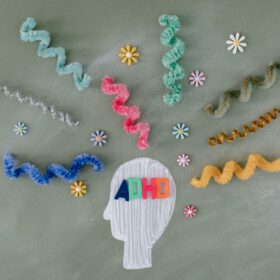
PMDD therapy
In this article
What's the lowdown?
Emotional symptoms of PMDD can include mood changes, anxiety and suicidal thoughts
Cognitive behavioural therapy (CBT) is a talking therapy that can teach management techniques for these emotional symptoms
What is PMDD
PMDD or premenstrual dysmorphic disorder is a debilitating disorder that severely affects the quality of life of those who struggle with it. It occurs during the luteal phase of the menstrual cycle (the 2 weeks before your period) and can cause physical, emotional and behavioural symptoms.
PMDD and PMS (premenstrual syndrome) have similar symptoms but vary in severity. More on the differences between PMDD and PMS here!
PMDD psychological symptoms
On top of the physical and behavioural symptoms of PMDD, there are emotional symptoms that can feel very overwhelming and distressing1.
Psychological symptoms of PMDD include:
- Feeling depressed
- Feeling hopeless, helpless or worthless
- Thoughts of self-harm
- Thoughts of suicide (ending your life)
- Quick changes in mood for example, happy to sad
- Anxiety and overthinking
PMDD therapy
For PMDD, a specific form of therapy called cognitive behavioural therapy (CBT) is recommended as a routine treatment by the Royal College of Obstetrics and Gynaecology2 for people who suffer from severe PMS aka PMDD.
CBT was formed on the basis that your thoughts, feelings, physicality and actions are all connected, so when you are in a negative mindset you can get stuck in a negative cycle which can lead to spiraling. CBT is a talking therapy that aims to tackle big feelings by breaking them down into smaller more digestible feelings3.
It focuses on your current feelings and not the past, equipping you with coping mechanisms to stabilise your mental state on a daily basis.
A 2019 study4 found CBT to be an effective talking therapy for PMDD sufferers. Coping mechanisms and stress management should be emphasised during the therapy sessions.
For PMDD, CBT should offer you ways to manage your symptoms during the luteal phase of your cycle and hopefully lessen the burden of the disorder.
CBT can be used alongside any of the other treatments for PMDD, and these can have a cumulative effect at improving your symptoms.
Please remember that if you are struggling with your emotional state at any point, there are services available to offer you support. The NHS emergency services can be reached on 111 or 9995 or the Samaritans charity has a free 24/7 helpline on 116 1236.
The UK mental health charity called Mind has also developed some tips on how to support yourself in a crisis or cope with suicidal feelings.
What next?
The first step in getting the support you need is to reach out to a medical professional, either your GP or a Lowdown female health GP for a diagnosis. Try and record your symptoms over at least 2 cycles so we can see if there is a pattern. We cover more on the diagnosis criteria of PMDD here. If you want to skip the NHS waiting list, ThinkCBT offers a private service either online or face to face, with a screening call in just 48 hours. Use the code LowDown if you’re interested.
There are multiple forms of treatments for PMDD out there, but PMDD counselling is a highly effective way of managing the emotional symptoms of the disorder.
Our medical review process
This article has been medically reviewed for factual and up to date information by a Lowdown doctor.







